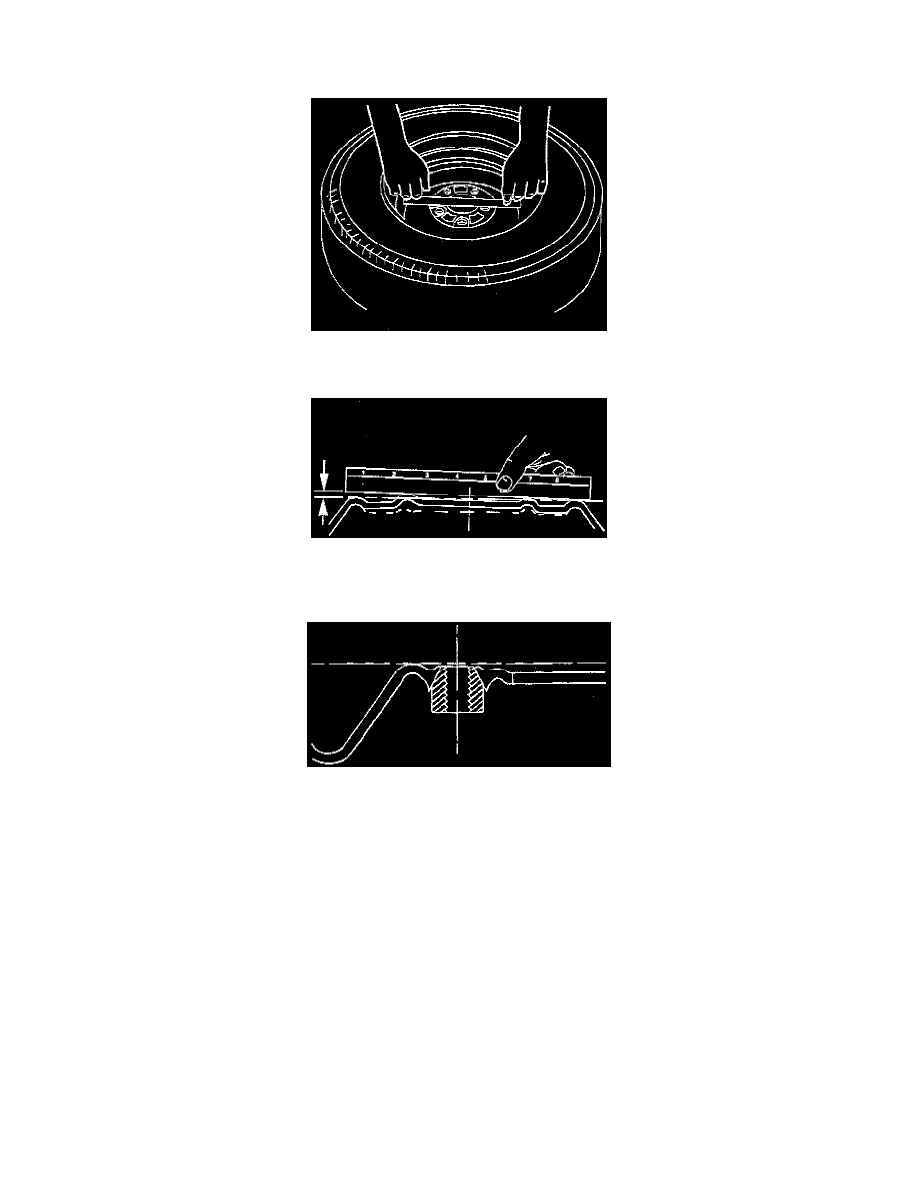Hombre S Regular Cab 2WD L4-2.2L CPC (1998)

Wheels: Testing and Inspection
Wheel Mounting Surface Check
1. Use a straight edge 203 - 229 mm (8 - 9 inch) long. Place the straight edge on the wheel inboard mounting surface. Try to rock the straight edge up
and down within the mounting surface.
2. Repeat this procedure on at least 3 or 4 different positions on the inboard mounting surface.
-
The outer ring of the mounting surface normally is raised above everything inside the mounting surface.
-
The mounting surface is raised above the outer ring if the wheel mounting surface is bent on a tire changer.
3. Inspect the mounting wheel/nut holes for damage caused from over-torquing the wheel nuts. Inspect for collapsed wheel/nut bosses. Inspect for
cracked wheel bosses.
NOTICE: The use of aftermarket reverse-type wheels, designed to extend the wheel away from the body, will increase the scrub radius. An
increased scrub radius may greatly increase steering effort and reduce hub bearing life.
IMPORTANT:
-
Replacement wheels must be equivalent to the original equipment wheels in the following ways:
-
Load capacity
-
Wheel diameter
-
Rim width
-
Wheel offset
-
Mounting configuration
-
A wheel of incorrect size or type may affect the following conditions:
-
Wheel and hub-bearing life
-
Brake cooling
-
Speedometer/odometer calibration
-
Vehicle ground clearance
-
Tire clearance to the body and the chassis
4. Replace the wheel if the wheel is bent. Replace the wheel if the wheel/nut boss area is cracked.
Identify steel wheels with a 2 or 3 letter code stamped into the rim near the valve stem.
